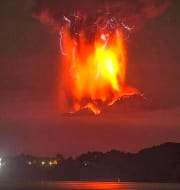Eruption of Fuego Volcano
Recently, Guatemalan authorities evacuated over a thousand people and closed a road as the Fuego volcano erupted, sending thick clouds of ash over nearby towns and farms.
Nature of the Eruption
The Fuego volcano is sending out “pyroclastic flows” – a high-temperature mix of gas, ash, and rock fragments that descend with great speed down the flanks of the volcanic complex. The ash column that was spewed by Fuego went beyond 6,000 meters in altitude. The ash was falling towards the western and southwestern parts of the volcano, which is located away from Guatemala City, the capital. The possibility of stronger emissions still remains since the “high level” eruption is ongoing, and the forecast of rainfall may lead to the formation of mudslides.
Impact on People and Places
The ash cloud could expose around 130,000 people to falling ash, which came down as far as 100 kilometers from the crater. Four towns in the vicinity have opened thirteen emergency shelters, which are capable of accommodating up to 7,600 people seeking refuge.
History of Fuego Volcano Eruptions
Fuego is an active volcano in Guatemala that erupts every four to five years on average. An eruption that occurred in 2018 caused lava to flow down the sides of the volcano, leading to the destruction of the village of San Miguel Los Lotes, resulting in the death of 215 individuals and leaving around the same number of people unaccounted for.
Month: Current Affairs - May, 2023
Category: Places in News Current Affairs








